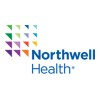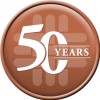
Safety and Efficacy of the Penumbra™ System in Acute Middle Cerebral Artery (MCA) Stroke
StrokeStroke prognosis is intimately related to reperfusion. Reperfusion in acute setting can be achieved with different strategies - varying from intravenous rtPA from mechanical thrombectomy. Recently, interventional approaches have been gaining attention and playing an increasing role in stroke care. However, no solid scientifical data is available to date. The investigators want do conduct a pilot trial to test if the use of the Penumbra™ System can improve clinical outcomes in a specific stroke setting.

AMES Treatment of the Proximal Arm in Chronic Stroke
StrokeCerebrovascular AccidentSubjects will receive 30 treatments with AMES, to the proximal arm which has been affected by a chronic stroke.

The General Use of Robots in Stroke Recovery
StrokeThe purpose of this study is to determine if tailoring multiple sessions of upper extremity robotic therapy to focus on a particular aspect of movement (e.g smoothness vs. aiming; active range of motion vs. functional practice)can optimize therapeutic results and lead to greater functional returns in arm mobility after stroke.

Randomized Study Comparing Periodic Acceleration Versus Static Position in Cerebrovascular Stroke...
Cerebrovascular StrokeStroke is one of the leading causes of death and disability worldwide. More than 85% of strokes are due to blood vessel occlusion resulting in partial destruction of the brain parenchyma. Current protocols try to re-establish blood circulation as soon as possible through chemical and/or mechanical interventions but new strategies are needed. Periodic acceleration (pGz) is a non-invasive method consisting in the application of a rocking movement to the patient that ultimately will induce the release of beneficial chemicals from the vascular endothelium (the cells lining the inside of the blood vessels). Application of pGz in an animal model of stroke resulted in a dramatic reduction of associated brain damage. This trial will investigate whether stroke patients exposed to pGz experiment significantly higher recovery than patients that remained static during their treatment.

Study of Early Versus Delayed Carotid Endarterectomy (CEA) for Small to Medium-sized Ischemic Stroke...
StrokeCarotid StenosisPilot study of early versus delayed carotid endarterectomy (CEA) for small to medium-sized ischemic stroke caused by high-grade carotid stenosis.

Visualization of Cerebral Arteries Using Contrast-Enhanced Transcranial Ultrasound in Stroke Patients...
StrokeThe purpose of this study is to find out more about the usefulness of ultrasound in combination with a contrast solution to look for blood vessel blockage or occlusion in the brains of stroke patients.

Investigation Of Two Different İnterventions İn Hemiplegic Patients
StrokePhysiotherapy and RehabilitationBackground: Our study aims to determine the effect of relaxation and breathing exercises in addition to the treatment procedure on depression level, sleep quality, and spasticity in hemiplegic patients. Methods: Thirty patients aged 40-70 years diagnosed with hemiplegia were included in the study. All patients received the same Bobath exercise three days a week for six weeks. Patients in Group 2 additionally received breathing and relaxation exercises. Sleep quality assessment by Pittsburgh Sleep Quality Index (PUKI), depression by Hospital Anxiety and Depression Scale (HADS), and spasticity by Modified Ashworth scale (MAS) were used. All assessments were made at baseline and six weeks after exercise treatments.

Effect of Sour Liquid On Swallowing Function of the Patients With Stroke
Acute StrokeThe aim of this study was to evaluate the effect of early administration of sour liquid on swallowing function of patients with post-stroke dysphagia. Hypothesis of the study were; H0: The sour liquid given early to patients with post-stroke dysphagia does not have an effect on swallowing function H1: The sour liquid given early to patients with post-stroke dysphagia has an effect on swallowing function The data of the study were collected using the "Personal Information Form," "Standard Swallowing Test," "Gagging Swallowing Screening Test (GUSS)," and the " National Institute of Health Stroke Scale (NIHSS)". Early administration of sour liquid to patients with post-stroke dysphagia was found to have a positive effect on swallowing function.

EFFECT OF EXERCISES IN PATIENTS WITH STROKE
StrokeExerciseAim: This study was conducted as a randomized controlled experimental study to determine the effect of ROM exercises applied to individuals who had a stroke on functional independence and quality of life. Design: This study was conducted as a randomized controlled experimental study Methods: The study was conducted with 80 individuals, 40 of whom were in the intervention group and 40 in the control group, who received inpatient treatment in the neurology service of a regional city hospital, and met the inclusion criteria. Planned ROM exercises were applied to the individuals in the intervention group 3 times a day for 2 weeks, and no application was made to the control group other than routine treatment. Data were collected by the researcher using the Questionnaire Form, Patient Information Form, Functional Independence Scale and Stroke Specific Quality of Life Scale.

Self-management EdUcation and SuPport to Promote PsychOsocial Health Among StRoke Survivors and...
StrokeThe purpose of this study is to create a virtual stroke community for stroke survivors and informal caregivers of stroke survivors by customizing an existing VE intervention to incorporate real-time, stroke-specific, psychosocial self management education (SME) and social interactions, to test feasibility, acceptability, and usability of the customized intervention for stroke survivors and informal caregivers of stroke survivors and to obtain and explore data to derive evidence-based hypotheses and properly design and conduct a future, larger trial to demonstrate treatment efficacy.
